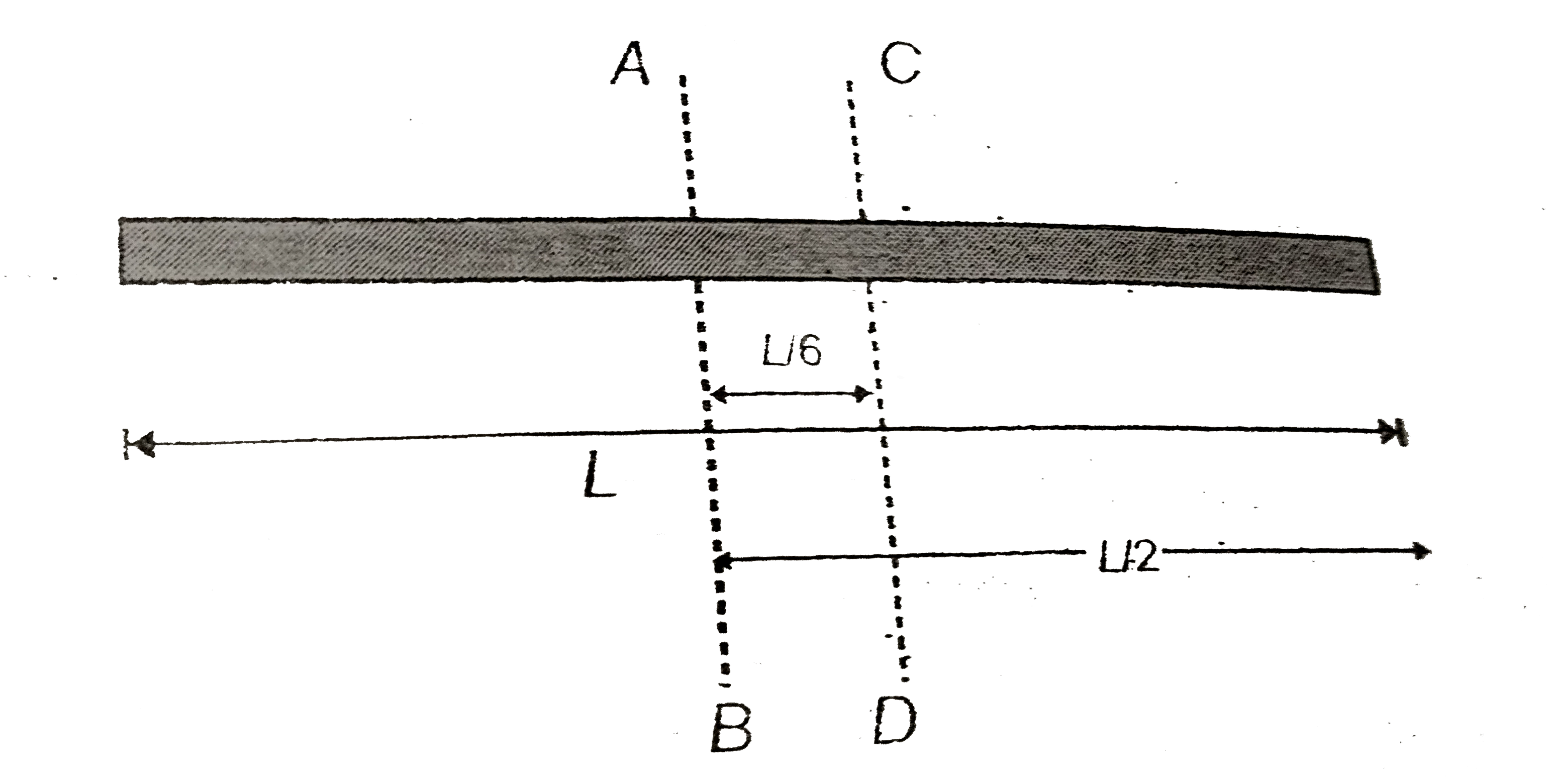The moment of inertia of a uniform cylinder of length landradiusR about its perpendicular bisector is I. What is the ratio l/R such that the moment of inertia is minimum ?
1
3√2
√32
√32
The correct Answer is:C
To find the ratio lR such that the moment of inertia I of a uniform cylinder about its perpendicular bisector is minimized, we can follow these steps:
1. Understanding the Moment of Inertia:
The moment of inertia I of a cylinder about its perpendicular bisector can be expressed in terms of its mass M, length l, and radius R.
2. Moment of Inertia Calculation:
The moment of inertia I for a cylinder can be derived using the formula:
I=112M(3R2+l2)
This formula accounts for the distribution of mass around the axis of rotation.
3. Expressing Mass Density:
The mass density ρ of the cylinder can be expressed as:
ρ=MπR2l
where M is the mass, R is the radius, and l is the length of the cylinder.
4. Substituting Density into the Moment of Inertia:
To minimize I, we can express it in terms of l and R. Substituting for M using the density gives:
I=112(MπR2l)(3R2+l2)
5. Differentiating to Find Minimum:
To find the minimum moment of inertia, differentiate I with respect to l and set the derivative to zero:
dIdl=0
This will lead to a relationship between l and R.
6. Finding the Ratio:
After differentiating and simplifying, we can find the optimal ratio lR. The calculations will yield:
lR=√3√2=√32
Final Result
Thus, the ratio lR such that the moment of inertia is minimized is:
lR=√3√2
The moment of inertia I of a cylinder about its perpendicular bisector can be expressed in terms of its mass M, length l, and radius R.
The moment of inertia I for a cylinder can be derived using the formula:
I=112M(3R2+l2)
This formula accounts for the distribution of mass around the axis of rotation.
The mass density ρ of the cylinder can be expressed as:
ρ=MπR2l
where M is the mass, R is the radius, and l is the length of the cylinder.
To minimize I, we can express it in terms of l and R. Substituting for M using the density gives:
I=112(MπR2l)(3R2+l2)
To find the minimum moment of inertia, differentiate I with respect to l and set the derivative to zero:
dIdl=0
This will lead to a relationship between l and R.
After differentiating and simplifying, we can find the optimal ratio lR. The calculations will yield:
lR=√3√2=√32
Thus, the ratio lR such that the moment of inertia is minimized is:
lR=√3√2
Similar Questions
Knowledge Check
Moment of inertia of a hollow cylinder of mass M and radius r about its own axis is
A23Mr2BMr2C13Mr2D12Mr2The moment of inertia of a uniform circular disc of mass M and of radius R about one of its diameter is
A14MR2B12MR2C23MR2D25MR2Moment of inertia of a hollow cylinder of mass M and radius R, about the axis of cylinder is
A12MR2BMR2C23MR2D25MR2
Find the moment of inertia of a half uniform ring (mass m, radius r) about its center.
View SolutionWhat is moment of inertia of a solid cylinder of mass m, length l and radiusr about the axis of the cylinder ?
View SolutionThe moment of inertia of a thing uniform rod of length L and mass M, about axis CD (as shown in figure) is

View SolutionThe moment of ineratia of a uniform thin rod about its perpendicular bisector is I. If the temperature of the rod is increased by Δt , the moment of inertia about perpendicular bisector increases by (coefficient of linear expansion of material of the rod is α).
View SolutionThe moment of inertia of a door of mass m, length 2l and width l about its longer side is.
View Solution


